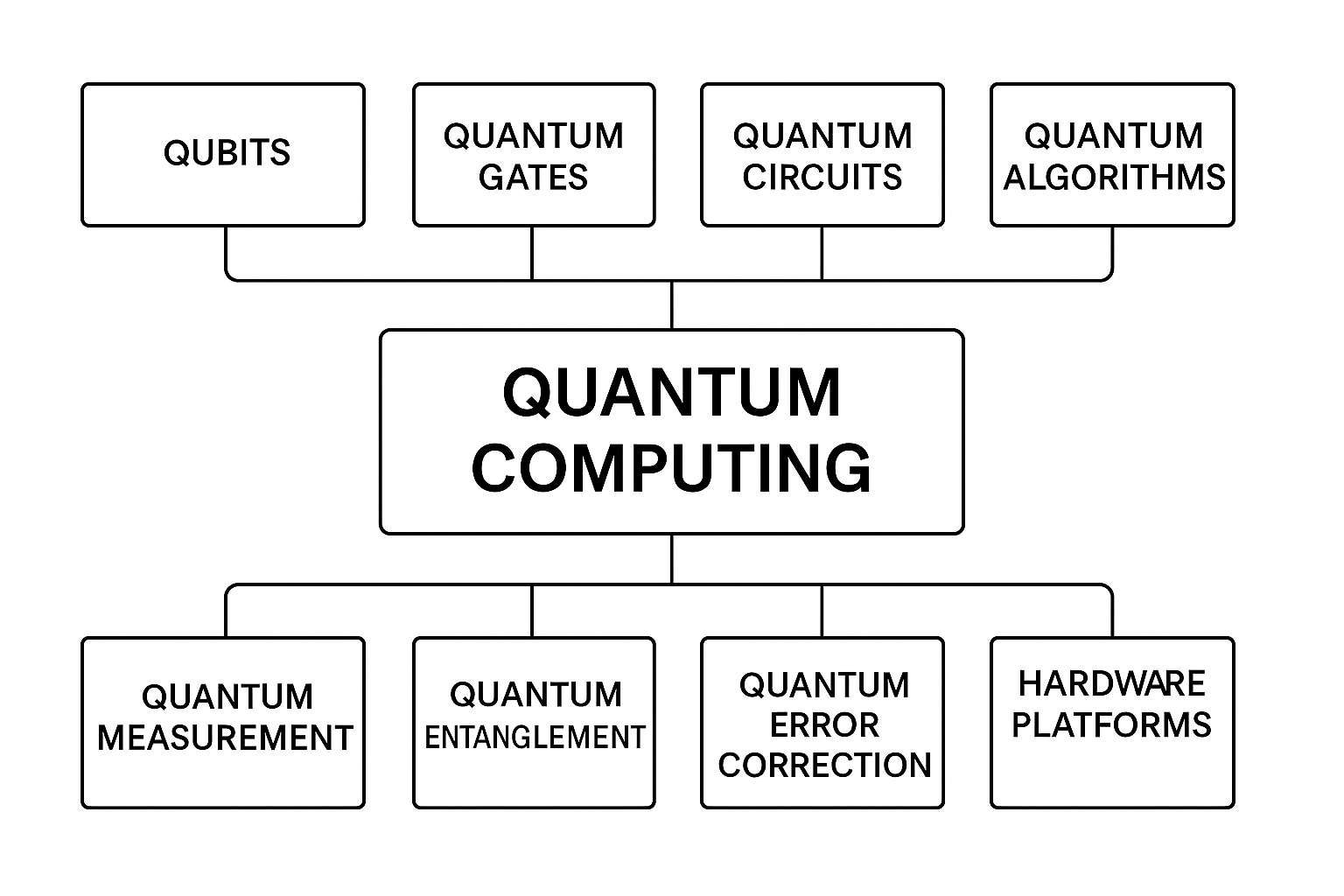Quantum computing is built on a foundation of principles from quantum mechanics. Its major elements include both physical components and theoretical concepts. Here’s a clear breakdown:
1. Qubits (Quantum Bits)
Definition: The basic unit of quantum information, analogous to bits in classical computing.
Properties:
Superposition: A qubit can be in a combination of
|0⟩and|1⟩states simultaneously.Entanglement: Qubits can be correlated with each other in ways that classical bits cannot.
Decoherence: The loss of quantum behavior due to interaction with the environment.
2. Quantum Gates
Definition: Operations that change the state of qubits, similar to logic gates in classical computing.
Types:
Single-qubit gates: e.g., Hadamard (H), Pauli-X, Y, Z
Multi-qubit gates: e.g., CNOT, Toffoli
Function: They manipulate qubits through unitary transformations (reversible operations).
3. Quantum Circuits
Definition: A sequence of quantum gates applied to qubits to perform a computation.
Usage: Used to design and run quantum algorithms.
4. Quantum Algorithms
Definition: Procedures or sets of instructions that leverage quantum mechanics for specific tasks.
Famous Examples:
Shor’s Algorithm (factoring)
Grover’s Algorithm (search)
Quantum Fourier Transform
5. Quantum Measurement
Definition: The process of observing qubit states, which collapses them into definite classical states (0 or 1).
Impact: Measurement alters the quantum state, so it’s usually done at the end of computations.
6. Quantum Entanglement
Definition: A quantum correlation between qubits such that the state of one qubit depends on the state of another, no matter the distance.
Importance: Essential for quantum teleportation, error correction, and parallelism.
7. Quantum Error Correction
Need: Quantum systems are fragile and error-prone due to decoherence and noise.
Method: Uses entangled qubits to detect and correct errors without measuring the quantum data directly.
8. Quantum Hardware Platforms
Types:
Superconducting Circuits (used by IBM, Google)
Trapped Ions (IonQ, Honeywell)
Photonic Qubits (light-based systems)
Topological Qubits (still experimental)
Role: Provide the physical systems to implement qubits and gates.
